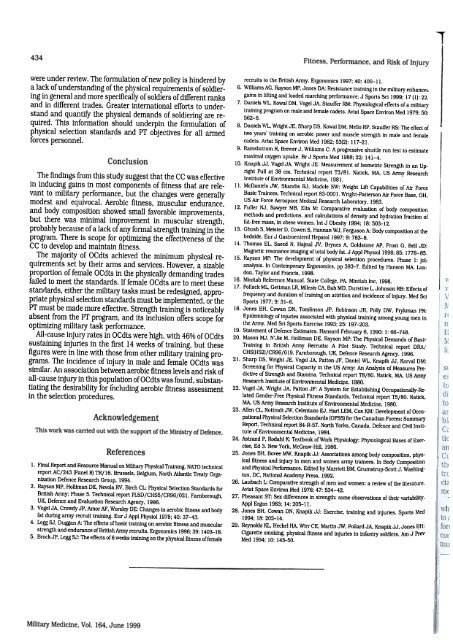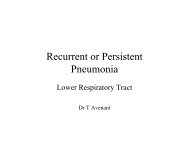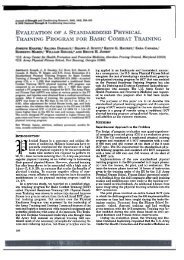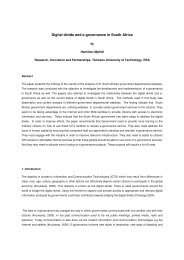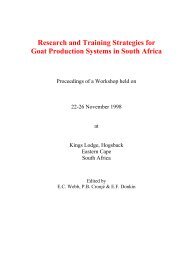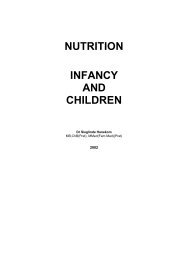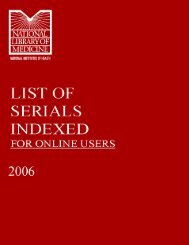Fitness, Performance, and Risk of Injury in British Army Officer Cadets
Fitness, Performance, and Risk of Injury in British Army Officer Cadets
Fitness, Performance, and Risk of Injury in British Army Officer Cadets
Create successful ePaper yourself
Turn your PDF publications into a flip-book with our unique Google optimized e-Paper software.
1<br />
434<br />
were under review. The fonnulation <strong>of</strong> new policy is h<strong>in</strong>dered by<br />
a lack <strong>of</strong> underst<strong>and</strong><strong>in</strong>g <strong>of</strong> the physical requirements <strong>of</strong> soldier<strong>in</strong>g<br />
<strong>in</strong> general <strong>and</strong> more specifically <strong>of</strong> soldiers <strong>of</strong> different ranks<br />
<strong>and</strong> <strong>in</strong> different trades. Greater <strong>in</strong>ternational efforts to underst<strong>and</strong><br />
<strong>and</strong> quantify the physical dem<strong>and</strong>s <strong>of</strong> soldier<strong>in</strong>g are required.<br />
This <strong>in</strong>fonnation should underp<strong>in</strong> the fonnulation <strong>of</strong><br />
The f<strong>in</strong>d<strong>in</strong>gs from this study suggest that the CC was effective<br />
<strong>in</strong> <strong>in</strong>duc<strong>in</strong>g ga<strong>in</strong>s <strong>in</strong> most components <strong>of</strong> fitness that are relevant<br />
to military performance, but the changes were generally<br />
modest <strong>and</strong> equivocal. Aerobic fitness, muscular endurance,<br />
<strong>and</strong> body composition showed small favorable improvements,<br />
but there was m<strong>in</strong>imal improvement <strong>in</strong> muscular strength,<br />
probably because <strong>of</strong> a lack <strong>of</strong> any formal strength tra<strong>in</strong><strong>in</strong>g <strong>in</strong> the<br />
program. There is scope for optimiz<strong>in</strong>g the effectiveness <strong>of</strong> the<br />
CC to develop <strong>and</strong> ma<strong>in</strong>ta<strong>in</strong> fitness.<br />
The majority <strong>of</strong> OCdts achieved the m<strong>in</strong>imum physical requirements<br />
set by their arms <strong>and</strong> services. However, a sizable<br />
proportion <strong>of</strong> female OCdts <strong>in</strong> the physically dem<strong>and</strong><strong>in</strong>g trades<br />
failed to meet the st<strong>and</strong>ards. If female OCdts are to meet these<br />
stanrlards, either the military tasks must be redesigned, appropriate<br />
physical selection st<strong>and</strong>ards must be implemented, or the<br />
IYr must be made more effective. Strength tra<strong>in</strong><strong>in</strong>g is noticeably<br />
absent from the IYr program, <strong>and</strong> its <strong>in</strong>clusion <strong>of</strong>fers scope for<br />
optimiz<strong>in</strong>g military task performance.<br />
All-cause <strong>in</strong>jury rates <strong>in</strong> OCdts were high, with 46% <strong>of</strong> OCdts<br />
susta<strong>in</strong><strong>in</strong>g <strong>in</strong>juries <strong>in</strong> the first 14 weeks <strong>of</strong> tra<strong>in</strong><strong>in</strong>g, but these<br />
figures were <strong>in</strong> l<strong>in</strong>e with those from other military tra<strong>in</strong><strong>in</strong>g programs.<br />
The <strong>in</strong>cidence <strong>of</strong> <strong>in</strong>jury <strong>in</strong> male <strong>and</strong> female OCdts was<br />
similar. An association between aerobic fitness levels <strong>and</strong> risk <strong>of</strong><br />
all-cause <strong>in</strong>jury <strong>in</strong> this population <strong>of</strong> OCdts was found, substantiat<strong>in</strong>g<br />
the desirability for mclud<strong>in</strong>g aerobic fitness assessment<br />
<strong>in</strong> the selection procedures.<br />
Acknowledgement<br />
This work was carried out with the support <strong>of</strong> the M<strong>in</strong>istry <strong>of</strong> Defence.<br />
References<br />
1. F<strong>in</strong>al Report <strong>and</strong> Resource Manual on Military Physical Tra<strong>in</strong><strong>in</strong>g. NATO technical<br />
report AC/243 (Panel 8) TR/16. Brussels. Belgium. North Atlantic Treaty Organization<br />
Defence Research Group. 1994.<br />
2. Rayson MP. Holliman DE. Nevola RV. Birch CL: Physical Selection St<strong>and</strong>ards for<br />
<strong>British</strong> <strong>Army</strong>: Phase 5. Technical report PLSD/CHS5/CR96/021. Farnborough.<br />
UK, Defence <strong>and</strong> Evaluation Research Agency. 1996.<br />
3. VogelJA. CrowdyJP. Amor AF. Worsley DE: Changes <strong>in</strong> aerobic fitness <strong>and</strong> body<br />
fat dur<strong>in</strong>g army recruit tra<strong>in</strong><strong>in</strong>g. Eur J Appl Physlol1978; 40: 37-43.<br />
4. LeggSJ. Duggan A: The effects <strong>of</strong> basic tra<strong>in</strong><strong>in</strong>g on aerobic fitness <strong>and</strong> muscular<br />
strength <strong>and</strong> endurance <strong>of</strong> <strong>British</strong> <strong>Army</strong> recruits. Ergonomics 1996; 39: 1403-18.<br />
5. Brock JP. Legg SJ: The effects <strong>of</strong> 6 weeks tra<strong>in</strong><strong>in</strong>g on the physical fitness <strong>of</strong> female<br />
<strong>Fitness</strong>. Perfonnance. <strong>and</strong> <strong>Risk</strong> <strong>of</strong> <strong>Injury</strong><br />
recruits to the <strong>British</strong> Amy. Ergonomics 1997; 40; 400-11.<br />
6. Williams AG, Rayson MP, Jones DA: Resistance tra<strong>in</strong><strong>in</strong>g <strong>in</strong> the military enhances<br />
ga<strong>in</strong>s <strong>in</strong> lift<strong>in</strong>g <strong>and</strong> loaded march<strong>in</strong>g performance. J Sporis Sci 1999: 17 (IJ: 22.<br />
7. Daniels \\'1, Kowal DM. Vogel JA, Stauffer RM: Physiological effects <strong>of</strong> a military<br />
tra<strong>in</strong><strong>in</strong>g program on male <strong>and</strong> female cadets. Aviat Space En\1ron Med 1979; 50;<br />
562-6.<br />
8. Daniels \\'1. Wright JE, Sharp DS, Kowal DM. Mello RP, Stauffer RS: The effect <strong>of</strong><br />
physical selection st<strong>and</strong>ards <strong>and</strong> JYr objectives for all armedforces two years' tra<strong>in</strong><strong>in</strong>g on aerobic power <strong>and</strong> muscle strength <strong>in</strong> male <strong>and</strong> female<br />
personnel. .<br />
cadets. A\1at Space Environ Med 1982; 53(2): 117-21.<br />
9. Ramsbottom R, Bre\\'er J, Williams C: A progressive shuttle run test to estimate<br />
maximal oxygen uptake. BrJ Sports Med 1988; 22: 141-4.<br />
Conclusion<br />
10. Knapik JJ, Vogel JA. Wright JE: Measurement <strong>of</strong> Isometric Strength <strong>in</strong> an Up-<br />
Military Medic<strong>in</strong>e, Vol. 164, June 1999<br />
right Pull at 38 cm. Technical report T3/81. Natick, MA. US Amy Research<br />
Institute <strong>of</strong> Environmental Medic<strong>in</strong>e, 1981.<br />
II. McDaniels JW, Sk<strong>and</strong>is RJ, Madole SW: Weight Lift Capabilities <strong>of</strong> AIr Force<br />
Basic Tra<strong>in</strong>ees. Technical report 83-000 I. Wright-Patterson AIr Force Base. OH.<br />
US AIr Force Aerospace Medical Research Laboratory. 1983.<br />
12. Fuller NJ, Sawyer MB, Elia M: Comparative evaluation <strong>of</strong> body composition<br />
methods <strong>and</strong> predictions, <strong>and</strong> calculations <strong>of</strong> density <strong>and</strong> hydration fraction <strong>of</strong><br />
fat-free mass. <strong>in</strong> obesewomen.lntJ Obesity 1994; 18: 503-12.<br />
13. Ghosh S. Meister D, Cowen S, Hannan WJ. Ferguson A: Body composition at the<br />
bedside. Eur J Gastroenterol Hepatol1997; 9: 783-8.<br />
14. Thomas EL, Saeed N, Hajnal JV. Brynes A, Goldstone AP, Frost G. Bell JD:<br />
Magnetic resonance imag<strong>in</strong>g <strong>of</strong> total body fat. J Appl Physiol1998; 85: 1778-85.<br />
15. Rayson MP: The development <strong>of</strong> physical selection procedures. Phase I: job<br />
analysis. <strong>in</strong> Contemporary Ergonomics, pp 393-7. Edited by Hanson MA. london,<br />
Taylor <strong>and</strong> Francis. 1998.<br />
16. M<strong>in</strong>itab Reference Manual. State College, PA, M<strong>in</strong>itab Inc, 1998.<br />
17. Pollack ML. Gettman LR, Milesis CA, Bah MD, Durst<strong>in</strong>e L, Johnson RB: Effects <strong>of</strong><br />
frequency <strong>and</strong> duration <strong>of</strong> tra<strong>in</strong><strong>in</strong>g on attrition <strong>and</strong> <strong>in</strong>cidence <strong>of</strong> tnjury. Med Sci<br />
Sports 1977: 9; 31-6.<br />
18. Jones BH. Cowan DN. Tomltnson JP. Robtnson JR, Polly DW. Frykman PN:<br />
Epidemiology <strong>of</strong> <strong>in</strong>juries associated with physical tra<strong>in</strong>tng among young men tn<br />
the Amy. Med Sci Sports Exercise 1993; 25: 197-203.<br />
19. Statement <strong>of</strong> Defence Estimates. Hansard February 6. 1990: I: 66-748.<br />
20. Mason MJ. N'Jie M. Holliman DE, Rayson MP: The Physical Dem<strong>and</strong>s <strong>of</strong> Basir<br />
Tratn<strong>in</strong>g tn <strong>British</strong> Amy Recruits: A Pilot Study. Technical report DRA/<br />
CHS(HS2J/CR96/019. Farnborough. UK. Defence Research Agency, 1996.<br />
21. Sharp DS, Wright JE, Vogel JA. Patton JF, Daniel WL. Knapik JJ. Korval DM:<br />
Screentng for Physical Capacity tn the US Amy; An Analysis <strong>of</strong> Measures Predictive<br />
<strong>of</strong> Strength <strong>and</strong> Stamtna. Technical report TS/80. Natick, MA. US Amy<br />
Research tnstitute <strong>of</strong> Environmental Medic<strong>in</strong>e, 1980.<br />
22. Vogel JA. Wright JA. Patton JF: A System for Establlshtng Occupationally-Related<br />
Gender-Free Physical <strong>Fitness</strong> St<strong>and</strong>ards. Technical report T5/80. Natick.<br />
MA. US Amy Research tnstitute <strong>of</strong> Environmental Medictne, 1980.<br />
23. Allen CL. NottrodtJW, Celentano EJ. Hart LEM. Cox KM: Development<strong>of</strong>Occu-<br />
pational Physical Selection St<strong>and</strong>ards (OPSSJ for the Canadian Forces: Summary<br />
Report. Technical report 84-R-57. North Yorks. Canada, Defence <strong>and</strong> CMl tnstitute<br />
<strong>of</strong> Environmental Medictne, 1984.<br />
24. Astr<strong>and</strong> P. Rodahl K: Textbook <strong>of</strong> Work Physiology: Physiological Bases <strong>of</strong> Exerclse.<br />
Ed 3. New York, McGraw-Hili. 1986.<br />
25. Jones BH. Bovee M\V, Knapik JJ: Associations among body composition. phys-<br />
Ical fitness <strong>and</strong> tnjury tn men <strong>and</strong> women army tra<strong>in</strong>ees. tn Body Composition<br />
<strong>and</strong> Physical <strong>Performance</strong>. Edited by Marrtott BM, Grumstrup-Scott J. Washtngton,<br />
DC. National Academy Press. 1992.<br />
26. Laubach L: Comparative strength <strong>of</strong> men <strong>and</strong> women: a review <strong>of</strong> the literature.<br />
Aviat Space Environ Med 1976: 47: 534-42.<br />
27, Pheasant ST: Sex differences tn strength: some observations <strong>of</strong> their variability,<br />
Appl Ergon 1983: 14: 205-11.<br />
28. Jones BH, Cowan DN, Knapik JJ: Exercise, tratn<strong>in</strong>g <strong>and</strong> tnjuries. Sports Med<br />
1994; 18: 202-14.<br />
29. Reynolds KL. Heckel HA. Wlrr CEo Mart<strong>in</strong>JW. Pollard JA. KnapikJJ. Jones BH:<br />
Cigarette smok<strong>in</strong>g, physical fitness <strong>and</strong> tnjurtes tn tnfantry soldiers, Am J Prev<br />
Med 1994; 10: 145-50.


